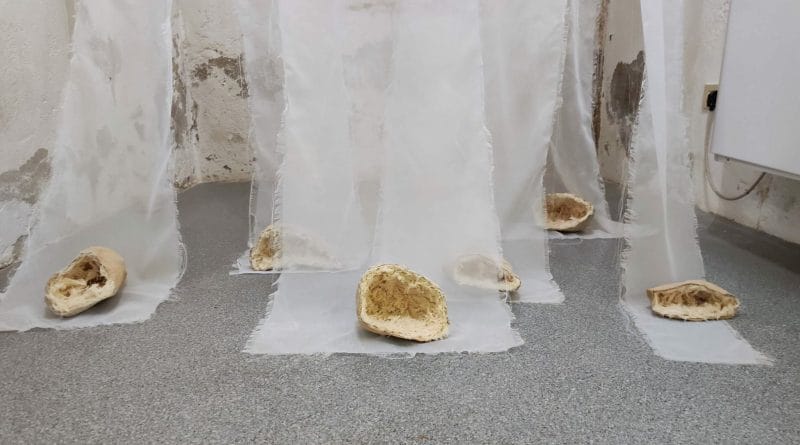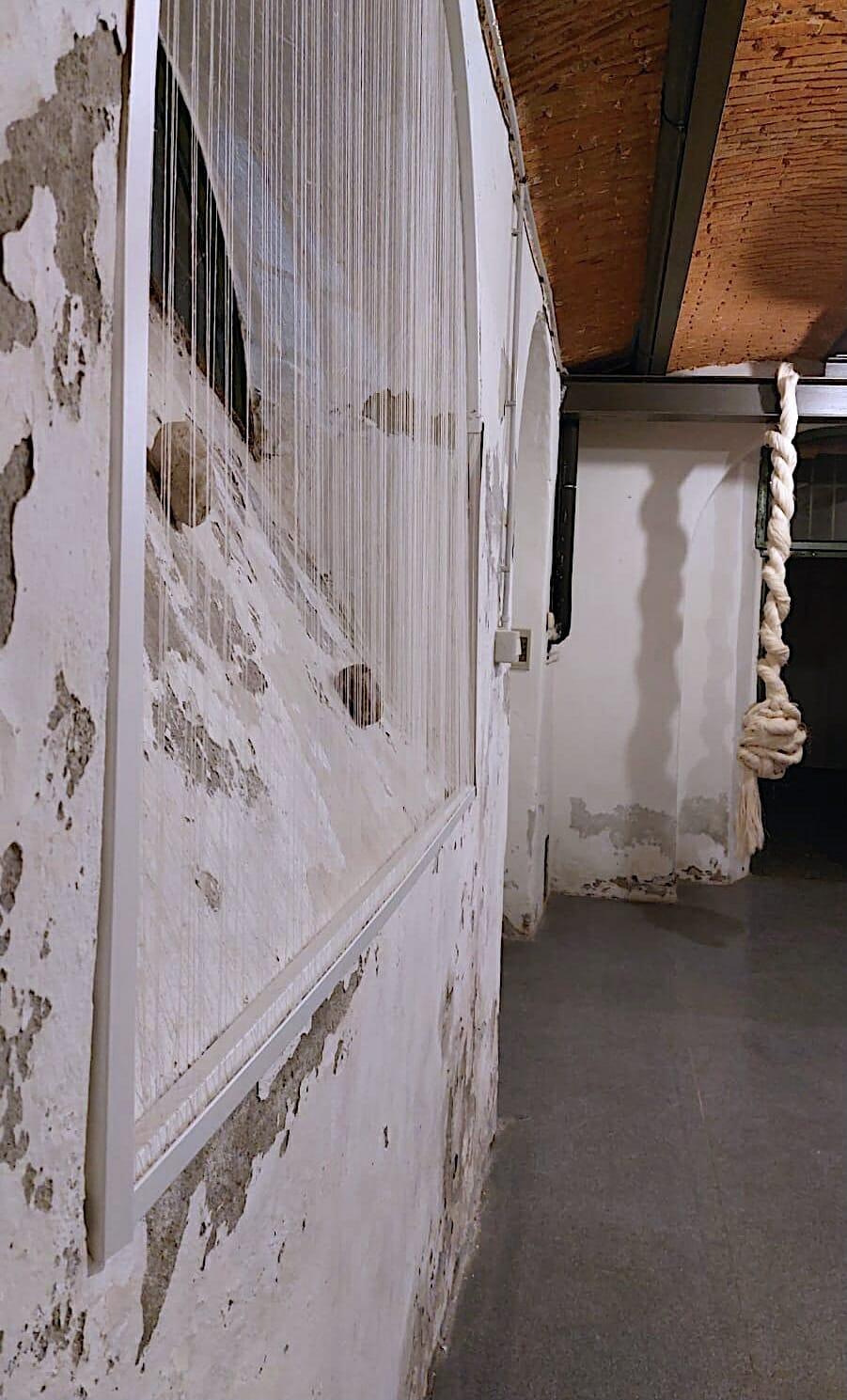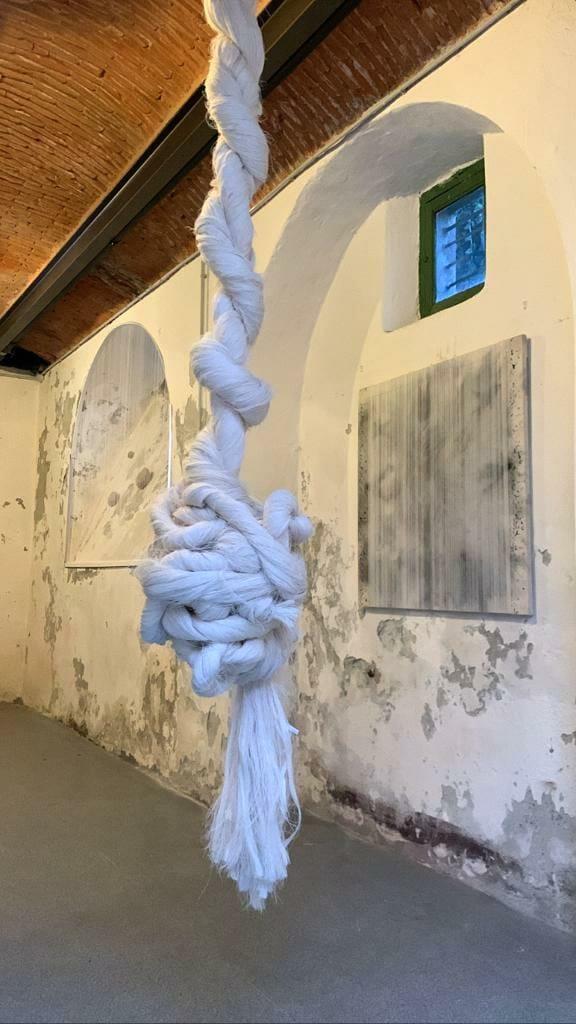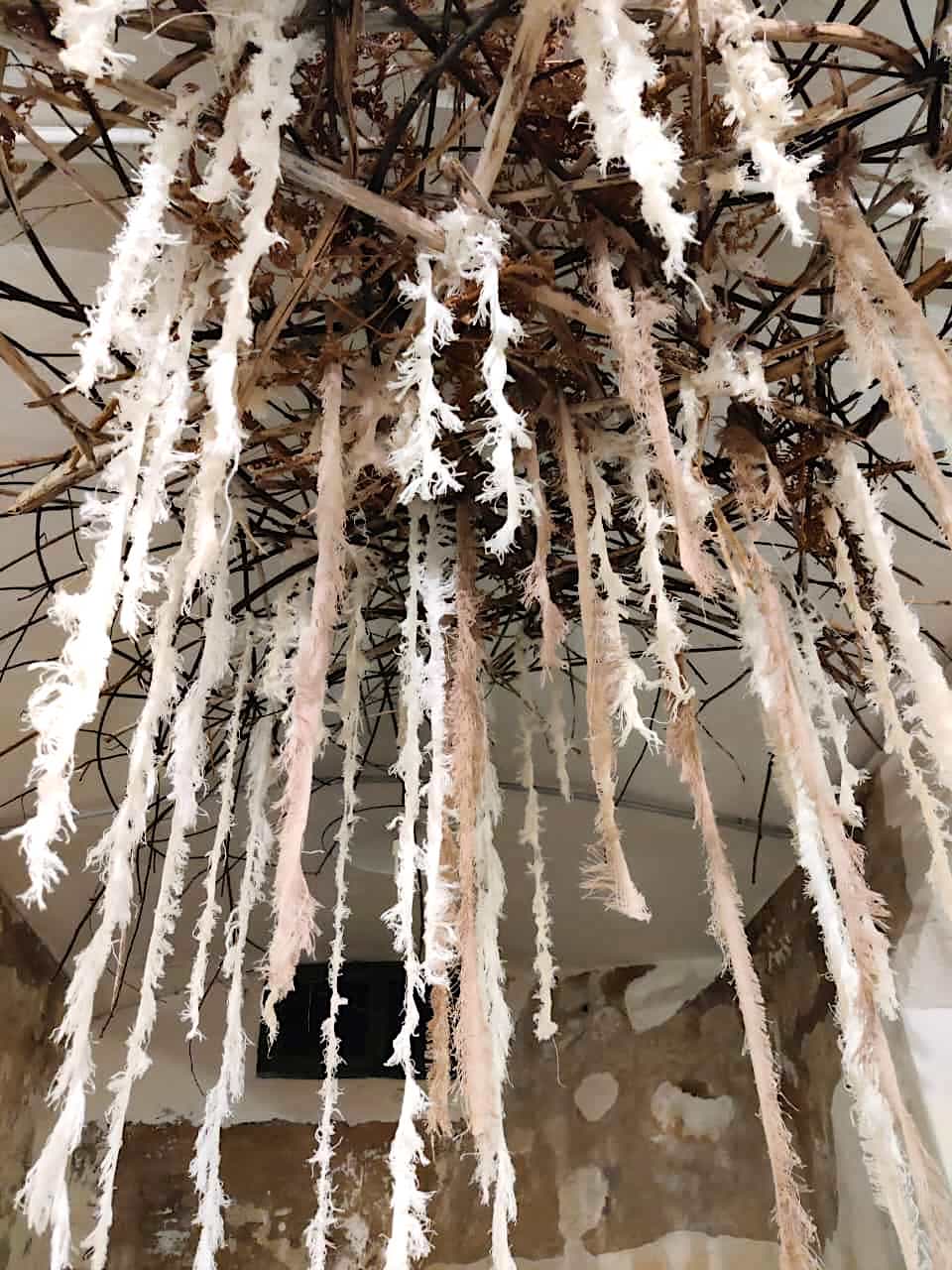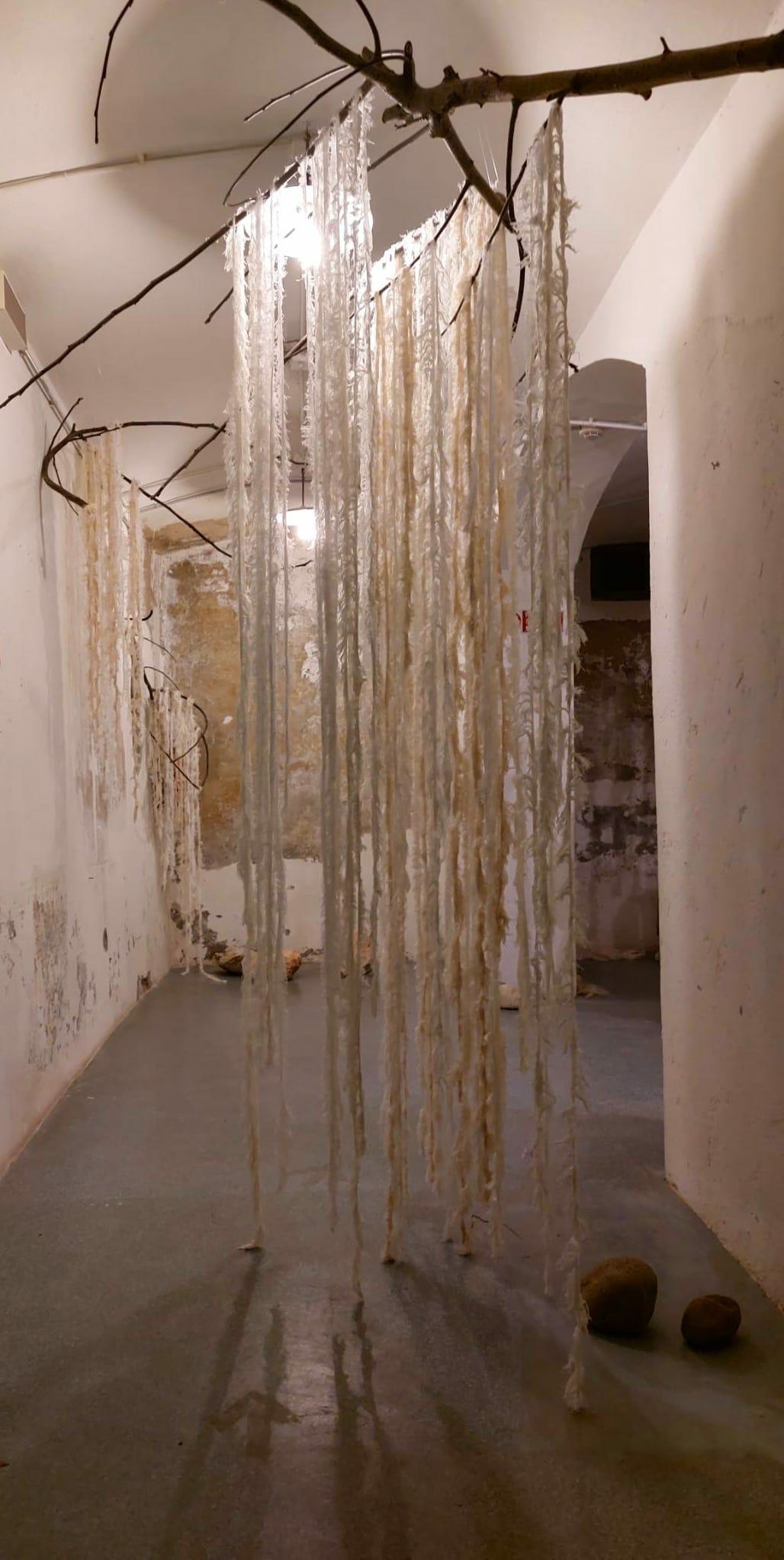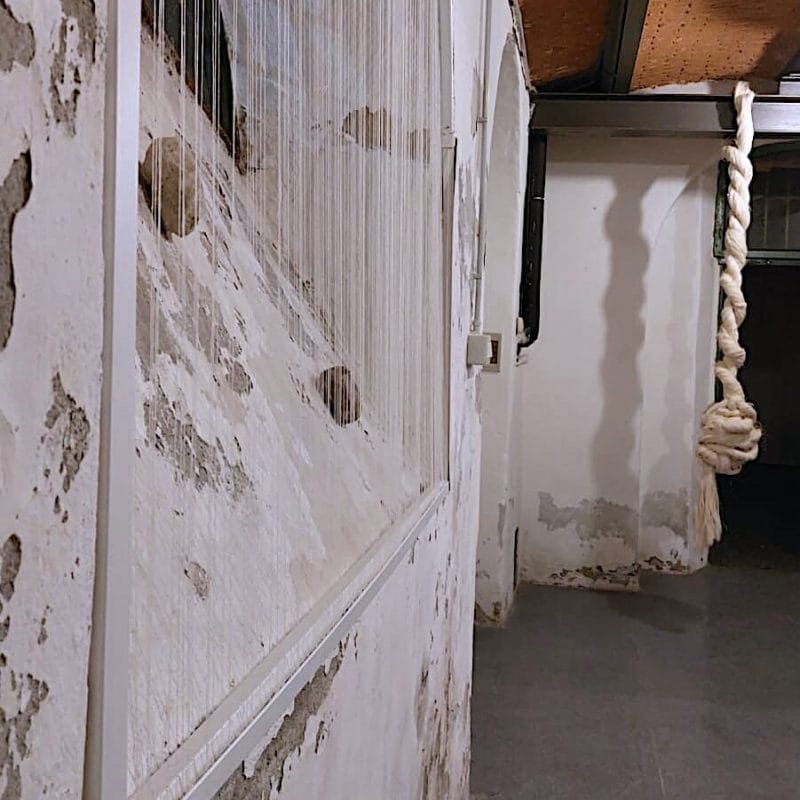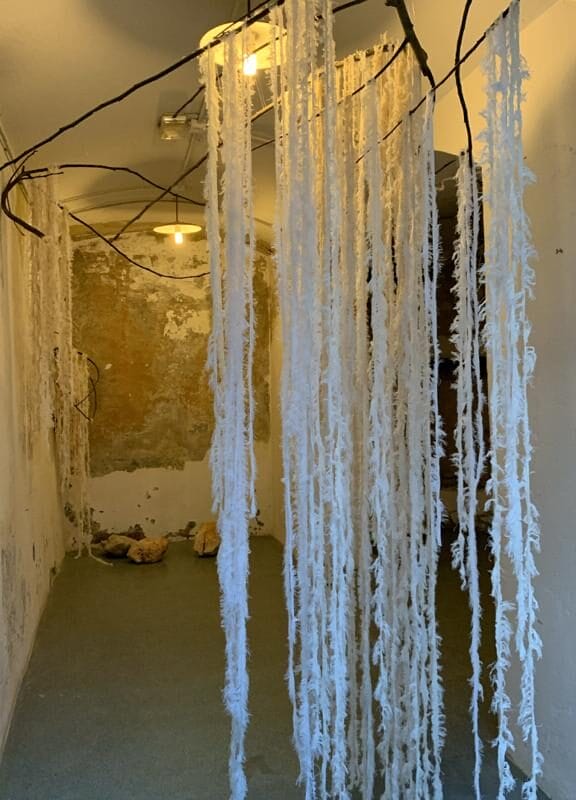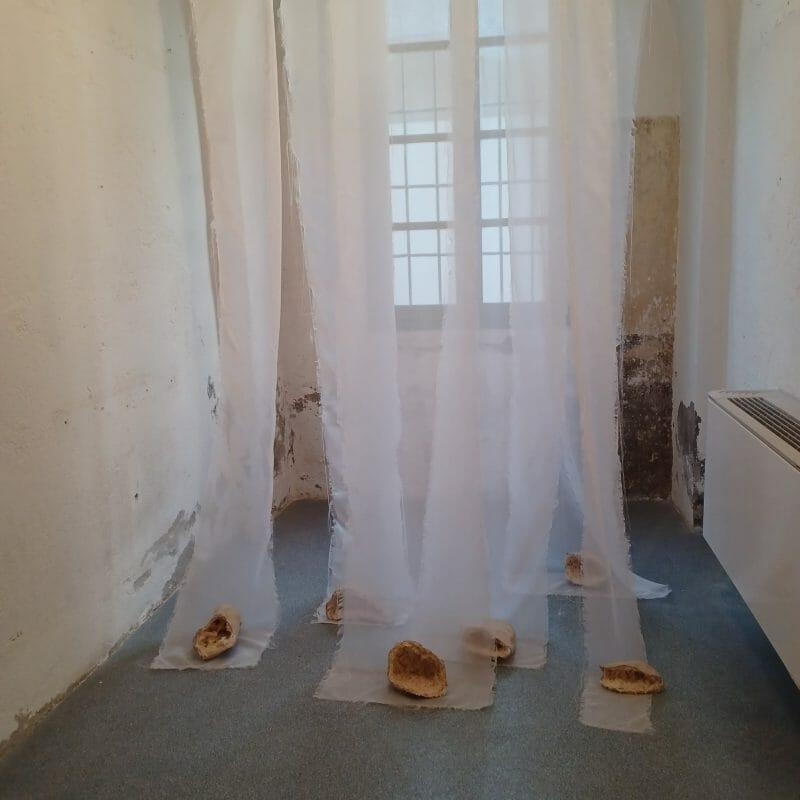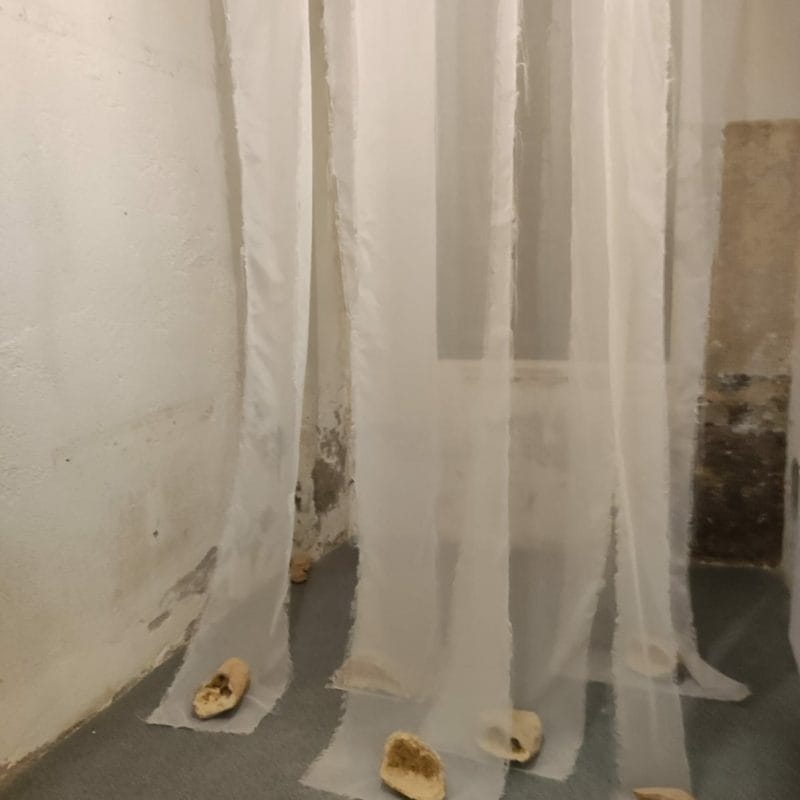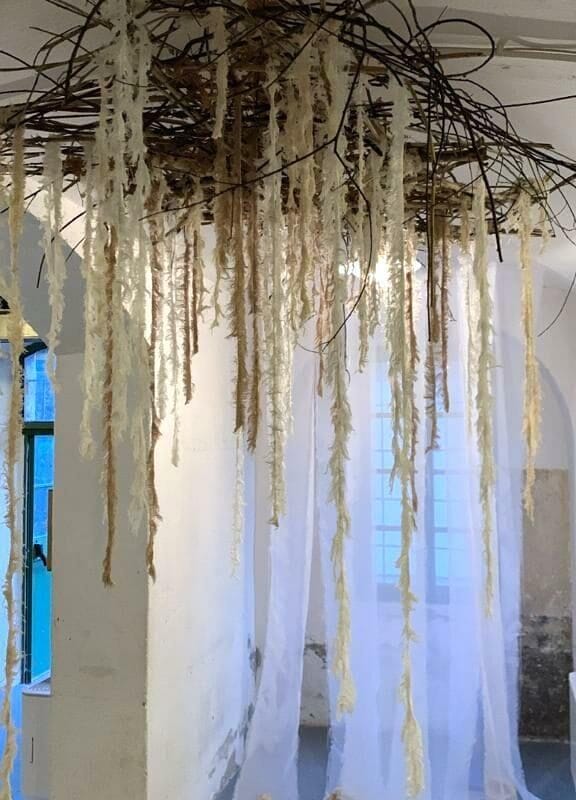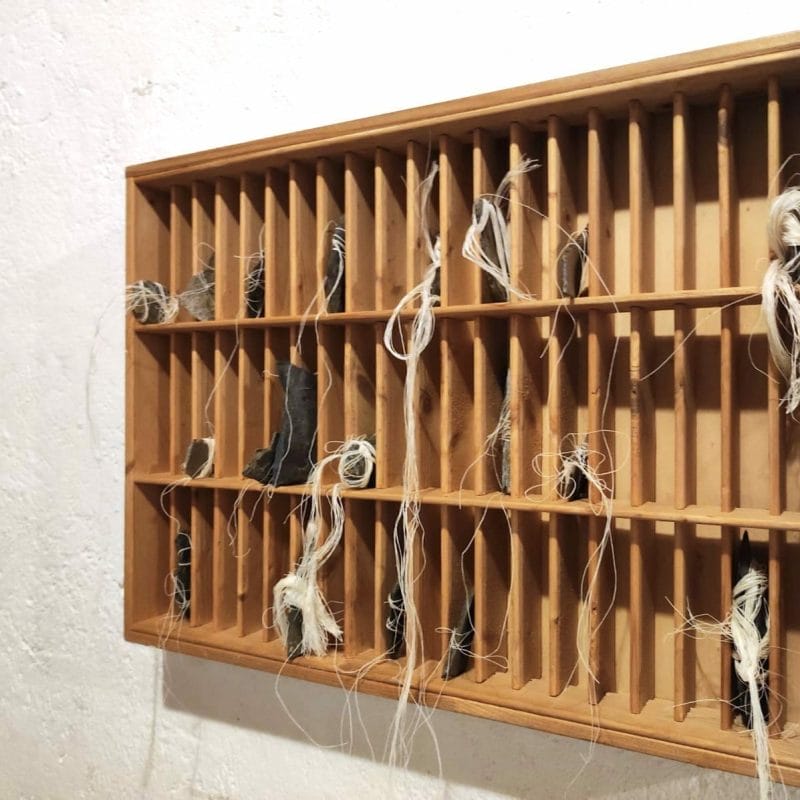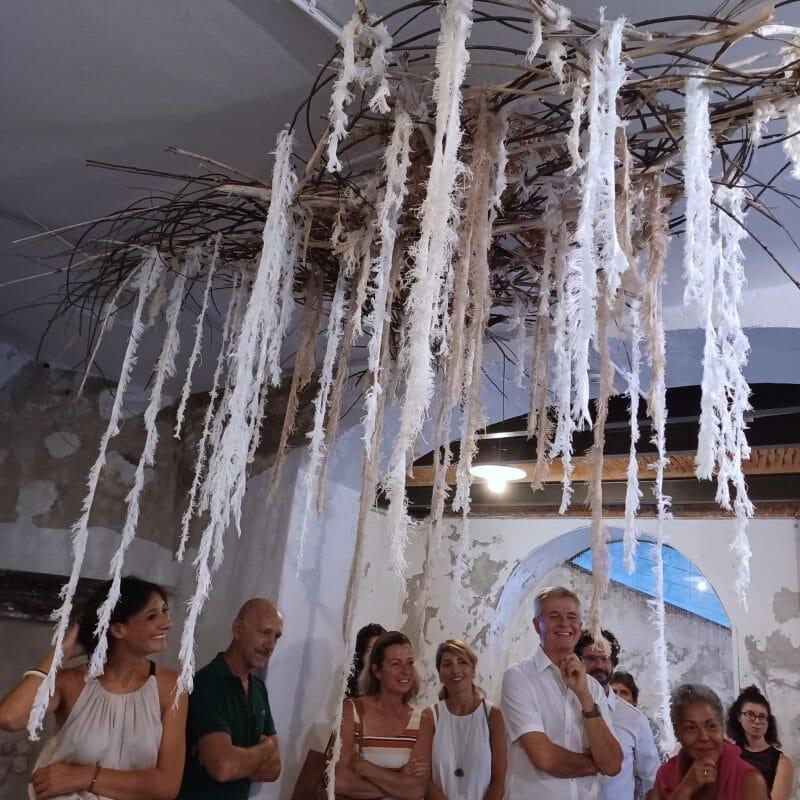SABA NAJAFI
Saba Najafi was born in Iran in 1979. After obtaining a degree in Painting at the Alzahra University of Tehran and the Master at the Honar Academy of the same city, she moved to Milan where she graduated first in Painting and then in Art Therapy at the Academy of Fine Arts of Brera. Visual artist, she moves between videos and installations, using textile and natural materials such as stones, branches, leaves.
She has numerous exhibitions in Italy and abroad including, recently, at Studio Pepe36 in Milan, a participation in the Festival del Tempo curated by Roberta Melasecca in Sermoneta and at the Biennial of Environmental Art “The nature of art”, edited by Elena Isella in Mariano Comense.
At the end of August 2022 her personal exhibition “Refuge” was inaugurated at the Civic Museum Setificio Monti in Abbadia Lariana in which the artist worked as a single site-specific installation, embracing the three naves of the ground floor of the Museum in silk, playing with the main elements of the building through reworkings of the latest series launched from 2020: “Metamorphosis”, branches linked together by strips of fabric like medical bandages, “Inner care”, stones partially covered with fabric, and new elaborations of the “Stone as memories” series, in papier mâché with calligraphic inserts.
I interviewed her for ArteMorbida on the occasion of the setting up of this latest project.
The exhibition at the Civic Museum Setificio Monti in Abbadia Lariana is structured as a site-specific installation. Why did you choose to work on the spaces of the Silk Museum and how does this material link with your work?
Silk was my first material outside of painting and I used it for its delicate and reflective character. In addition to this bond, silk offers with its history and its production process many hints for ideas that were in significant line with my artistic research. The concepts dear to me such as time, life and memory are reflected through the path of the Museum which has silk and its history as the protagonist.
In an exhibition space that is unique and unlike any other, the history of silk has created a link between East and West through different cultures that hide multiple nuances. The best way to dialogue with the space was to design a site-specific work that is unique and specific, on a personal level this type of work interests me a lot because it is different from the creation in the studio.It is a challenge with space and with myself, leading me to feel emotions through the ideation, the waiting and the realization at the moment.
The link between my work and silk is an emotional one. I use fabrics like cotton threads and strips. My materials do not always have the same origin, but they belong to the same large family of textiles and there is familiarity in the shape. Silk represents delicacy and reflexivity, a reflection on myself, on my world and the relationship with others. The birth of silk is closely related to trees, branches and leaves, which are fragments of my works. The Silk Museum could be a cocoon to let my new ideas fly.
Your artistic training at the “Honar” Art University in Tehran, Iran, and later at the Brera Academy of Fine Arts is in painting, but for several years you have also and above all worked with textile materials. When and how did you come to take care of this and how much of your path in painting is left in your work today?
It happened in 2013, on the occasion of my thesis at the Brera Academy with the title “Contemporary Intimacy”. I couldn’t express myself with painting because it was a communication from the inside out, between me and others, where distance and space had a strong meaning.So I chose to use layers of fabric instead of color. The first works were made on a frame, close to the pictorial format. From the path through painting I learned the ability to look, analyze details and the freedom to imagine.
And when did you start creating installations instead?
The first step was from painting to textile material. I used wool and silk threads to express myself on the diversity of perceiving different cultures. I wanted to use silk because it symbolically reflected the viewer’s image and in a very natural way I used wool threads as a symbol of my culture or how other cultures identify mine.
The step following the installation was not a decision, but it happened and was linked to what I had to express at the moment. I remember that a friend after seeing my first stone works in 2019 told me: do you now do three-dimensional works? This question surprised me a lot: for me it was not a separation from what I did before, even if the shape was different. I hadn’t noticed the change. Since then I have continued to make installations, also carrying out works on canvas
How does the relationship with Iran enter your works?
Textile art is present and important in life in Iran. The children, crawling on all fours, wander on carpets with colorful landscapes: they play and grow in Persian gardens on the floors of the house.
As an artist, having a strong cultural reference in the textile world, I try to keep my identity, but Iran is present in my thinking, in my emotional heritage, in my memory, in my way of being and acting. Language and culture shape us and greatly affect our way of perceiving the world. So my gaze is inevitably filtered by my culture and my personal experience.
In your works you frequently combine fabric with natural materials such as stones, leaves and branches.
I identify a lot with the natural elements. I have a lot of passion for nature, with a researcher look. Nature is magical, I get lost in the details and shapes. Sometimes I collect elements that I then use in the future and this is an aspect recently discovered by analyzing the jump from stone to branches which represents a very fragile moment in my life. In most of my works the natural elements materialize or give shape to concepts concerning various shades of human existence: for example, in the stones we pass from various states of mind, called “Self-portraits”, to the unconscious, while instead in the series “Metamorphosy” with the help of branches I materialize resilience in a fragile state.
The very nature of the elements helps me to express myself: the fabric and the threads are the tangible links that unite and cross the world with multiple concepts.
What is the common thread that unites your works?
The common thread is my search for nuances of existence in relation to nature, human beings and the world. I search in my feelings of perceiving life, being in the world. In this research, materials are means by which to express myself and for now I feel very comfortable with natural elements and textile materials.
What are your plans for the future?
In recent years for personal reasons I have worked more indoors in my studio, while now I want to go out and bring my ideas and projects to light. Express and create without limits.
